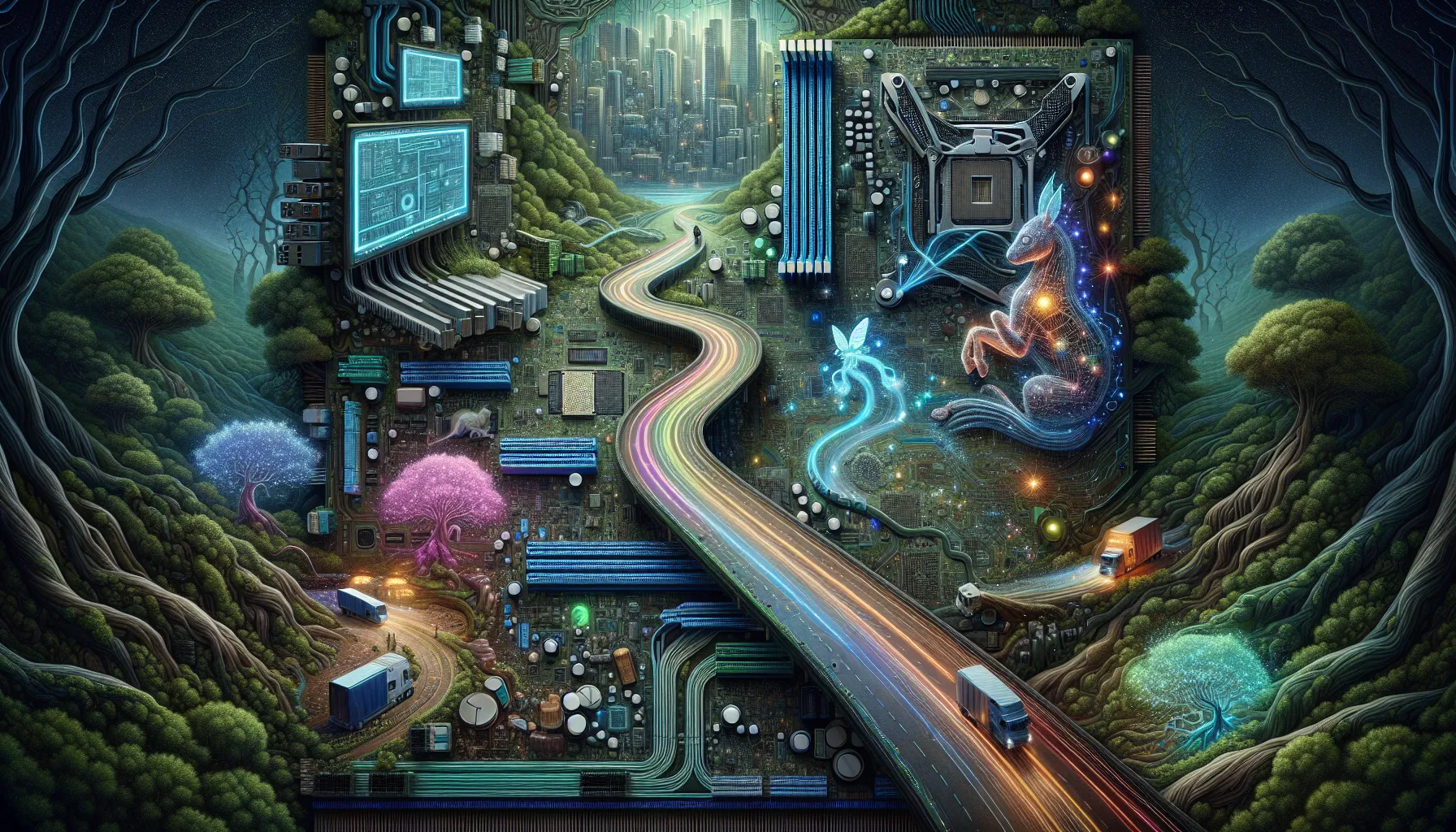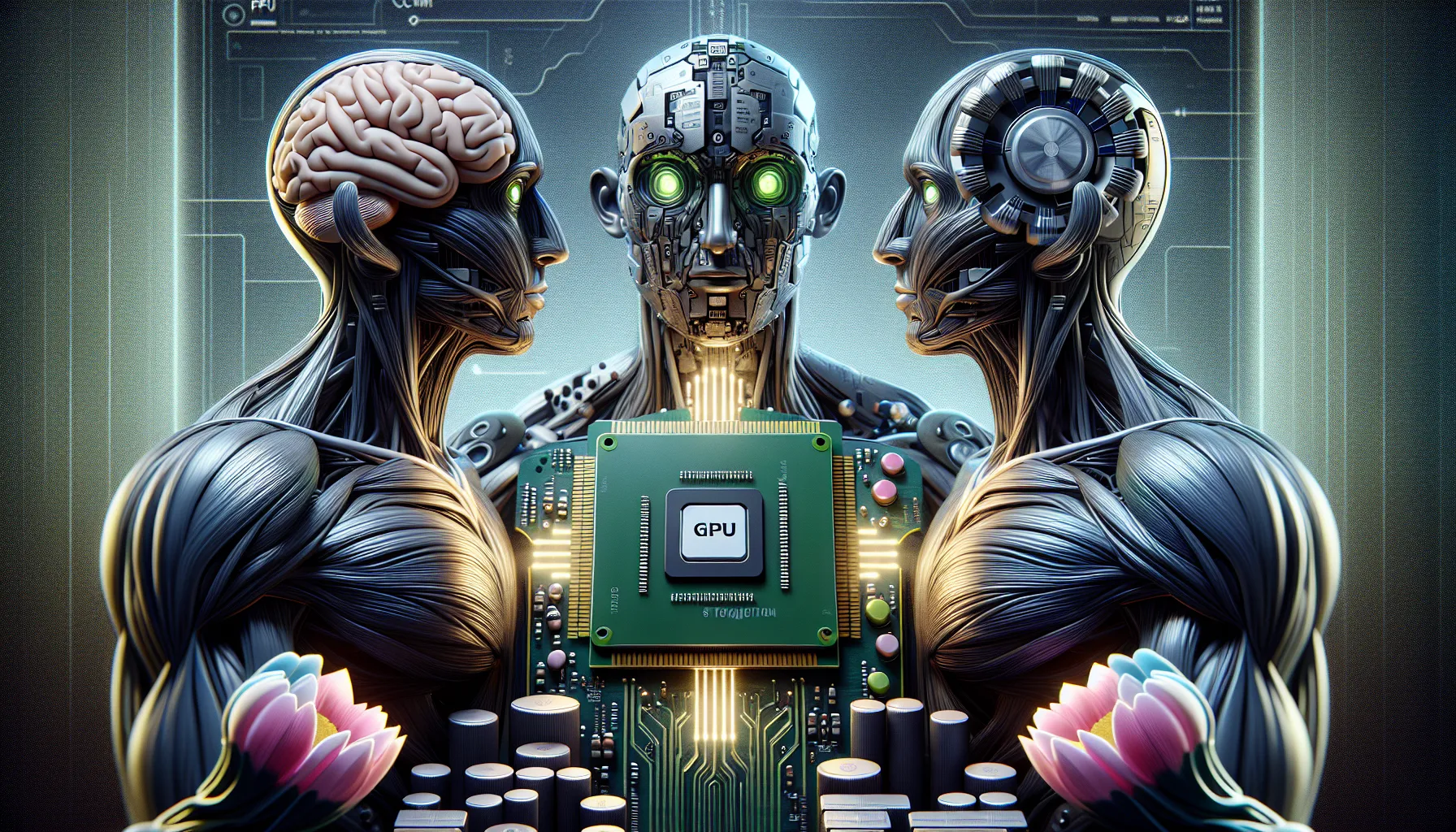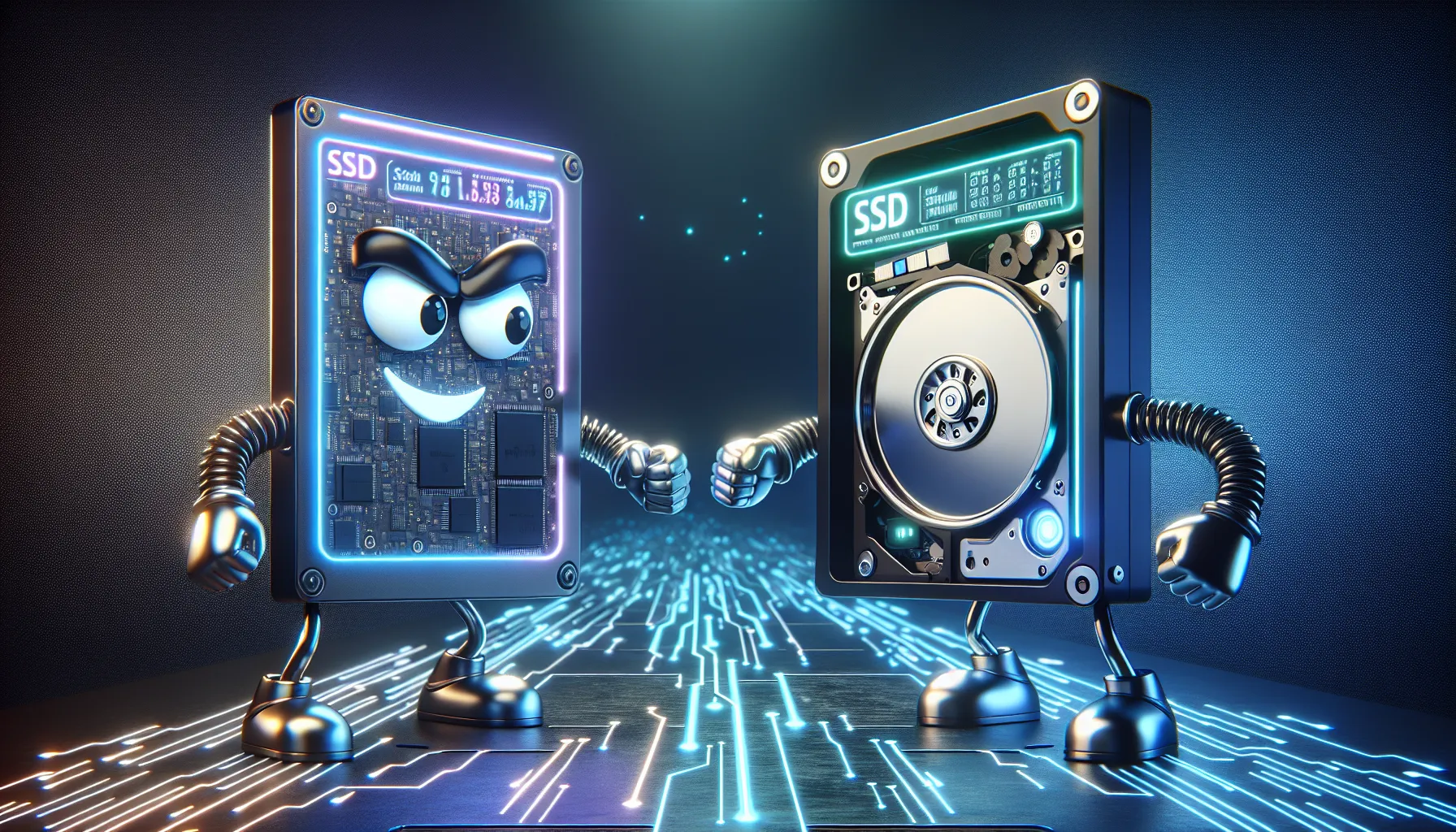Flashback to my first desktop: a beaten-up hand-me-down with a sticker that said 'Turbo,' though nothing about it was fast. I remember staring puzzled at the jumble of wires whenever it froze, wishing I knew which part was what, or why the fan sometimes sounded like a jet engine. The truth is, once you know the cast inside your computer, it all starts to make sense—and even becomes entertaining. If you've ever wondered what each bit actually does, or why some pieces cost as much as a midlife crisis motorcycle, this one's for you.
The Unsung Hero: Motherboard Functions and Real-Life Quirks
When you peek inside your computer, you’ll notice a large, flat board covered in tiny circuits and connectors. This is the motherboard—the true heart of your PC. While the CPU is often called the brain, the motherboard is what keeps everything connected and running smoothly. It links your CPU, RAM, GPU, storage, wireless card, cooling fans, and power supply, allowing them to communicate and share power. In short, every major component relies on the motherboard to function.
What’s surprising is that, despite its central role, the motherboard is usually less expensive than other key parts like the CPU or GPU. Research shows that the motherboard’s main job is to let electrical current flow and to coordinate how all the computer components talk to each other. This makes it essential for both hardware initialization and future upgrades. If you ever want to swap out your graphics card or add more RAM, the motherboard is the platform that makes those upgrades possible.
Here’s a quirky truth: even the most powerful CPU or GPU is useless without a working motherboard. I learned this the hard way after a coffee spill—no amount of high-end hardware could save my system until I replaced the motherboard. It’s a reminder that, while you might be tempted to spend big on a flashy processor or graphics card, the backbone of your system is the motherboard itself.
- Motherboard Functions: Connects and powers all components, manages data flow, and supports upgrades.
- Motherboard Components: Includes slots and ports for CPU, RAM, storage, GPU, network cards, and more.
- Motherboard Upgrades: Choosing the right motherboard allows for easier future upgrades and better compatibility.
The motherboard is the heart of the computer—without it, nothing connects or communicates.
So, when considering your next build or upgrade, don’t overlook the importance of a solid motherboard. It’s the unsung hero that makes every other part of your computer tick.

Brains, Brawn, and Beauty: How the CPU, GPU, and RAM Divide the Work
Ever wondered what really powers your computer behind the scenes? Three main components do the heavy lifting: the Central Processing Unit (CPU), the Graphics Processing Unit (GPU), and RAM. Each has a unique role, and together, they keep your system running smoothly.
CPU: The Brain and Orchestrator
The CPU is often called the brain of your computer. It sits on the motherboard—usually under a cooling fan—and handles every calculation and instruction. Whether you’re typing a document or launching a program, the CPU is in charge. It’s like the orchestrator at a symphony, making sure every part works in harmony. In fact, “The CPU handles every calculation and instruction—it’s why typing shows up instantly and games don’t stutter.” Modern CPUs, like the Intel 14th Gen Core i9 and AMD Ryzen 9, lead the pack in 2025 for speed and performance. The CPU Control Unit and Arithmetic Logic Unit are key parts of this microprocessor, handling instructions and math.
GPU: The Visual Wizard
Next up is the GPU, or graphics card. Think of it as the Bob Ross of your computer, painting visuals at lightning speed. The GPU takes care of everything you see—game graphics, video playback, and even some creative work. Discrete GPUs are powerful (and pricey), while integrated graphics are more budget-friendly but less robust. Research shows that for top-tier CPU and GPU performance, a dedicated graphics card is essential, especially for gaming or video editing.
RAM: The Short-Term Memory
RAM (Random Access Memory) acts as your computer’s short-term memory. It stores the data and programs your CPU needs quick access to. If you run out of RAM, you’ll notice slowdowns—especially when multitasking or editing large videos. As one analogy goes, “Think of your RAM as a tool bag: it keeps essentials close for quick access, saving you trips to the garage (hard drive).” RAM functionality is crucial for responsiveness, and its importance in computers can’t be overstated.
Storage Wars: SSDs vs Hard Drives (and Why Old School Isn’t Dead)
When you look inside your computer, one of the biggest battles is the SSD vs Hard Drive Comparison. Both have the same job: holding your operating system, programs, and personal files—everything from family photos to your favorite games. But how they do it, and how fast, is where things get interesting.
Traditional Hard Disk Drives (HDDs) use spinning magnetic disks and a tiny moving arm to read and write data. Imagine a record player, but for your digital life. HDDs can store a ton of data for a low price, making them a favorite for anyone who needs lots of space without breaking the bank. But here’s the catch: they’re slow. Accessing files can feel like searching through a packed garage. You’ll get what you need, but not always quickly.
Enter the Solid State Drive (SSD). Instead of spinning parts, SSDs use memory chips—no moving pieces at all. This means SSD vs HDD speed isn’t even close. Apps load almost instantly, and your computer boots up in seconds. Research shows SSDs outperform HDDs not just in speed, but also in durability, since there’s nothing mechanical to break down. The downside? SSDs cost more per gigabyte, so you might not get as much storage for your money.
Many new computers now come with SSDs, or even a combination of both drives: SSD for speed, HDD for extra storage. I once revived an old laptop by swapping in an SSD—suddenly, it felt brand new, like giving a grandma sneakers. Or as one user put it:
Upgrading to an SSD transformed my old PC—it was like swapping out a tricycle for a race car.
So, while SSDs are quickly becoming the standard for performance, don’t count out the classic hard drive just yet. If you need lots of space for less money, the old school HDD still has its place.

Keeping It Cool: Why Your Computer Loves Fans and Power Supplies (More Than You Think)
Ever wondered why your computer has so many fans or why the power supply unit (PSU) gets so much attention in tech circles? It’s all about keeping things cool and powered up—literally. Cooling Systems CPUs GPUs are the unsung heroes inside your PC, working quietly to prevent your system from turning into a mini oven.
Let’s start with CPU Cooling Systems and GPU Cooling Solutions. Your CPU and GPU are like the brain and muscles of your computer. When you’re gaming, editing videos, or just running lots of apps, these parts heat up fast. That’s where PC Cooling Fans come in. They’re usually attached directly to the CPU or GPU, or placed inside the case to keep air moving. Think of them as your computer’s sweat glands, pushing out hot air and pulling in cool air to keep everything at the right temperature. If you’re into high-performance builds, liquid cooling is a step up, offering advanced thermal management for demanding setups.
Why does this matter? CPU Overheating Prevention isn’t just about comfort—it’s about survival. Overheated components can slow down, crash, or even get permanently damaged. Research shows that proper cooling ensures CPUs and GPUs don’t overheat, keeping your system stable and extending its life.
Now, about that Power Supply Unit PSU. It might not look flashy, but it’s the lifeline of your computer. The PSU converts electricity from your wall into the right kind of power for every component. PSU Specifications like wattage and efficiency are crucial. Too weak, and your system won’t run right. Too unreliable, and, well—
A failed power supply turned my gaming night into a candlelight vigil for fried electronics.
Even laptops rely on solid power supplies, not just desktops. Power Supply Specifications matter for every device, big or small. So next time you hear your fans spinning or see that PSU humming, remember: they’re working overtime to keep your computer cool, safe, and running smoothly.
Connection and Protection: Wireless Cards & Computer Cases
Ever wondered how your computer connects to Wi-Fi without a tangle of cables? That’s the magic of the Wireless Network Card. This small but mighty component lets your PC or laptop tap into wireless networks, so you can browse, stream, or work from anywhere in your home—no ethernet cable required. If your desk is nowhere near the router, a wireless card is essential. In fact, wireless card functionality is now standard in nearly all new computers, making cable-free internet the norm rather than the exception.
Let’s talk about Wireless Card Features. Most modern cards support the latest Wi-Fi standards, offering fast speeds and reliable connections. Some even include Bluetooth, letting you connect wireless headphones or keyboards with ease. Research shows that a good wireless card is crucial for portable computing, especially if you move your device between rooms or workspaces.
But connection isn’t the only thing that matters. Protection is just as important, and that’s where Computer Case Types come in. The case is more than just a box—it’s the shield that keeps your computer’s delicate insides safe from dust, spills, and bumps. Cases come in all shapes and sizes, from compact minis to towering full-towers, each designed to fit different setups and needs.
Don’t underestimate Computer Case Cooling. Cases are designed with vents, mesh panels, and fan mounts—these case airflow features are vital for keeping your components cool. I once tried running a PC without a case during a summer heatwave; my desk is still haunted by the smell of roasted plastic. As the saying goes:
PC cases aren’t just boxes—they’re lifelines for your components on hot days.
So, whether you’re gaming, working, or just browsing, the right wireless card and case make all the difference. They keep you connected and your hardware protected, all while managing heat and adding style to your setup.

Conclusion: Beyond the Parts—What Your PC Really Says About You
When you look inside your computer, it’s easy to see a collection of parts—CPU, GPU, motherboard, RAM, SSD, and more. But as you’ve discovered in this Computer Components Overview, these pieces are more than just hardware. They’re reflections of your choices, your goals, and even your personality. Are you a minimalist, picking only what you need for a clean, efficient build? Or maybe you’re a gamer, prioritizing top-tier CPU and GPU performance for the ultimate experience. Some people love to over-engineer, adding extra cooling fans or a high-wattage power supply just in case. There’s no single right answer—your PC build in 2025 is as unique as you are.
What matters most is how these parts work together. Each component supports the others, and no single piece can make your system shine on its own. Research shows that balancing performance, price, and your personal needs leads to the best PC experience. It’s tempting to chase the latest specs or flashy features, but a wise builder knows that compatibility and teamwork are what really count. The motherboard quietly connects everything, the CPU and GPU handle the heavy lifting, and the RAM and SSD keep things running smoothly. Even the humble cooling fan and wireless card play vital roles.
Don’t be afraid to experiment. Sometimes you’ll break things, or an upgrade won’t go as planned. That’s all part of the journey. In fact, some of the best tech stories start with a mistake and end with a lesson learned. As you continue exploring the world of PC building, remember:
In the end, a PC’s more than just plastic, chips, or wires—it's a puzzle of priorities and passions.No matter what parts you choose, it’s the sum of their teamwork (and your experiments) that counts. Building a computer is more than assembling hardware—it’s about creating something that fits you.
TL;DR: To really get what makes your computer tick (and why some parts cost a fortune), think of it as a team of specialists: the motherboard connects, the CPU thinks, the GPU paints, storage holds your stuff, and cooling keeps everyone alive. Picking the right mix matters—so knowing the roles can save money, headaches, and maybe a meltdown (computer or personal).



